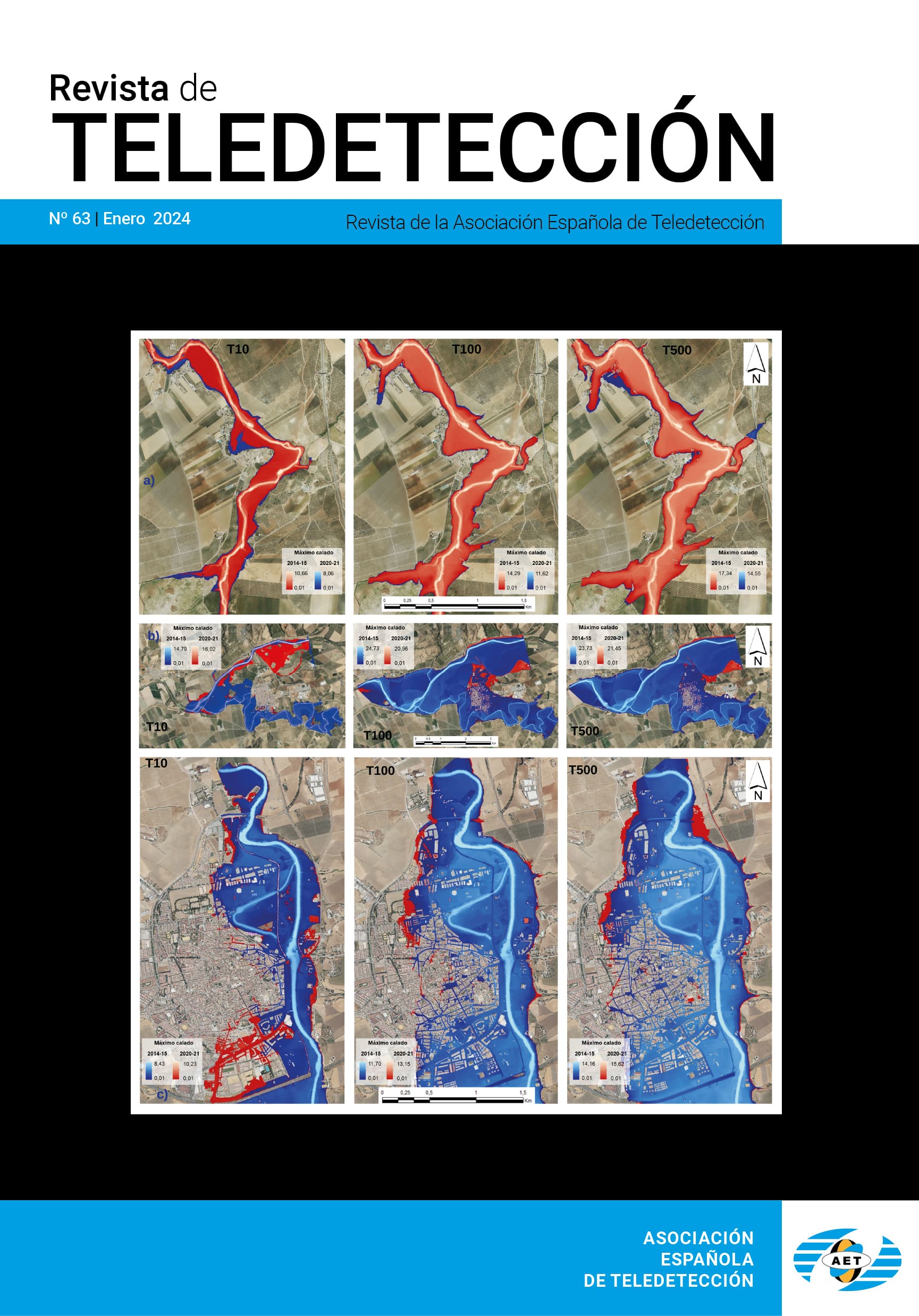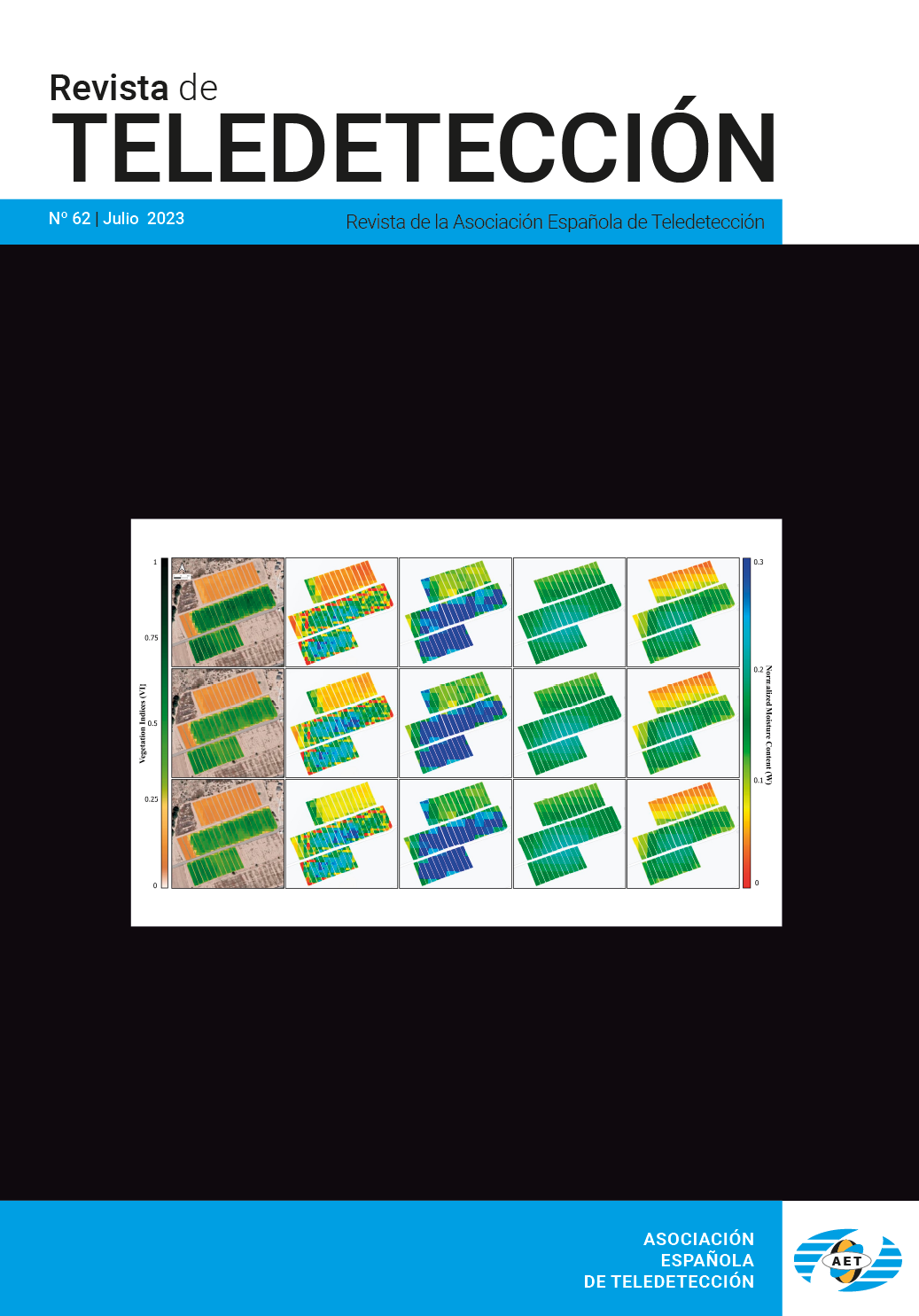Método de estimación del fitovolumen leñoso en la zona semiárida de Chile mediante una imagen SPOT y mediciones de campo
L. Morales, J. Sobrino, G. Castellaro, J. El-Kharraz, y J.C. Parra
RESUMEN
En este trabajo se propone una metodología de estimación del fitovolumen en regiones semiáridas de montaña en Chile, a partir de mediciones de terreno relativamente sencillas. Estas se realizan en dos transectos ortogonales de 25 m cada uno, a lo largo de los cuales se miden las alturas y el ancho de cada mata de vegetación leñosa y los intervalos entre ellos. En estas zonas de Chile, la vegetación arbustiva se distribuye en unidades de contorno ovalado, dejando espacios libres alrededor de cada unidad. Dicha distribución hace posible construir un modelo estadístico de distribución, aplicando el algoritmo de Montecarlo para estimar el fitovolumen y el número total de matas en un cuadrado de 25x25 m2. Este modelo necesita solamente de la longitud de los transectos, el número de matas en cada transecto, el ancho de cada mata y la altura de cada mata. Además se requiere de un factor que esta relacionado con la variabilidad y tipo de las especies, y que toma valores comprendidos entre 1 y 2,2, que corresponden respectivamente a una vegetación de árboles y a una vegetación de estepa rala. Para obtener la distribución espacial del fitovolumen, se usaron dos sectores de una imagen captada por el satélite SOPT 4 el 6 de enero de 1998, y correspondientes a las zonas de Chillepín y Los Rulos. De esta forma se obtuvieron relaciones entre el fitovolumen y el NDVI, con un coeficiente de correlación de 0,77, y un error cuadrático medio del 12%.
ABSTRACT
We propose a methodology to estimate phytovolume in an arid-mountain ecosystem of Chile, derived from relatively simple field measurements and SPOT data. These measurements were made in two orthogonal transects of 25 m each one, where the height and the width of ligneous bushes and the distance between them was measured. In these zones, the ligneous vegetation is distributed in units of oval contour, leaving free spaces between each unit. This distribution permits to obtain a statistical model of spatial distribution, applying the Montecarlo algorithm to estimate phytovolume and total number of plants in a quadrant of 25x25 m2. The model needs only the length of the transect, the number of plants in every long section, the width and the height of every plant. It also needs a factor that it is related to the types and species variability. The range of this factor is between 1 and 2.2, which correspond to ligneous vegetation and grassland vegetation respectively. In order to find the spatial distribution of the phytovolume, two scenes SOPT4 were used, of January 6 of 1998, corresponding to the areas of Chillepín and Los Rulos. The relationships between the fitovolumen and the NDVI present a correlation coefficient of 0,77, and a root mean square error of 12%.
PULSE AQUI PARA DESCARGAR EL ARTÍCULO COMPLETO.




















